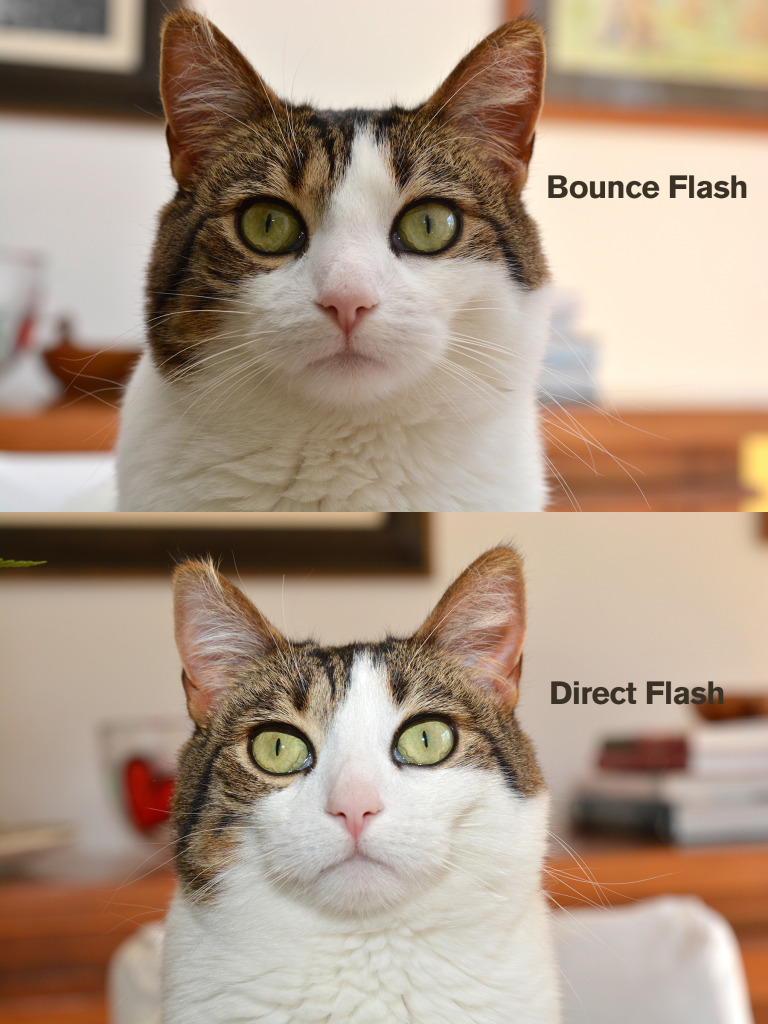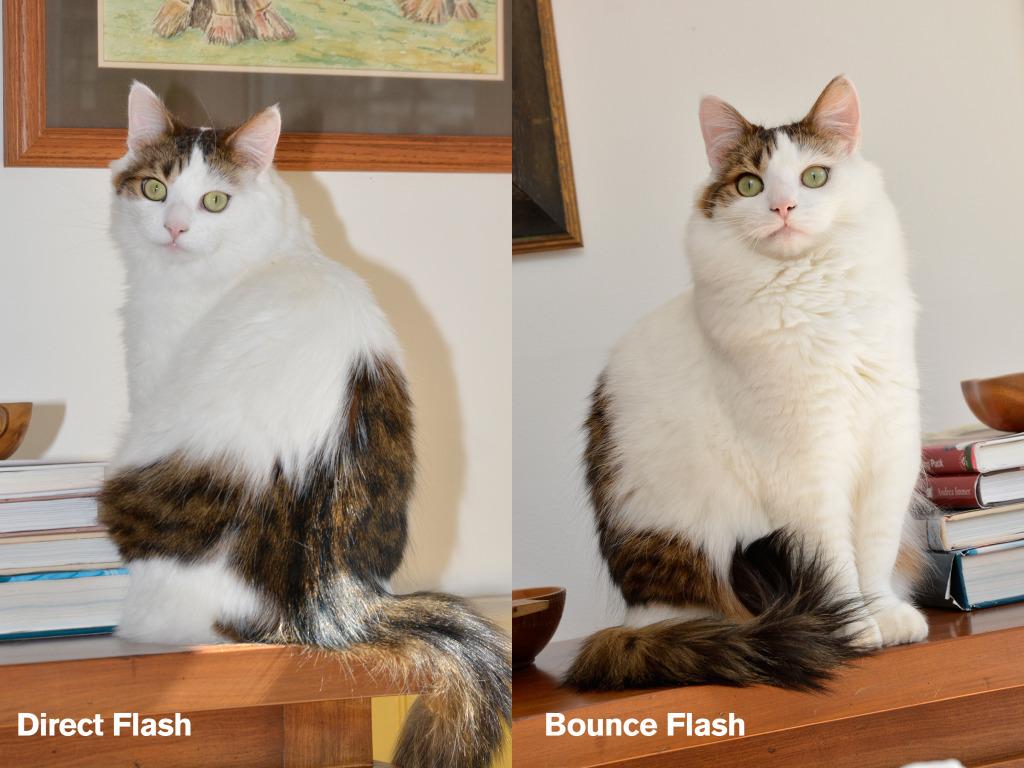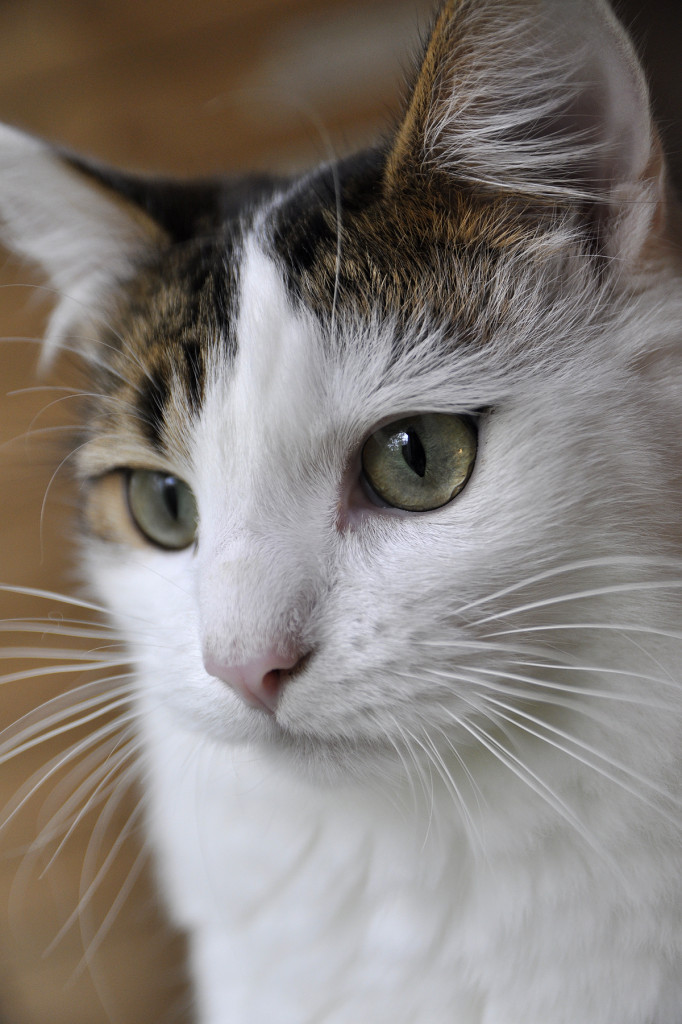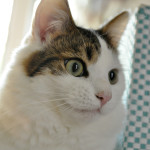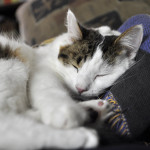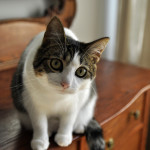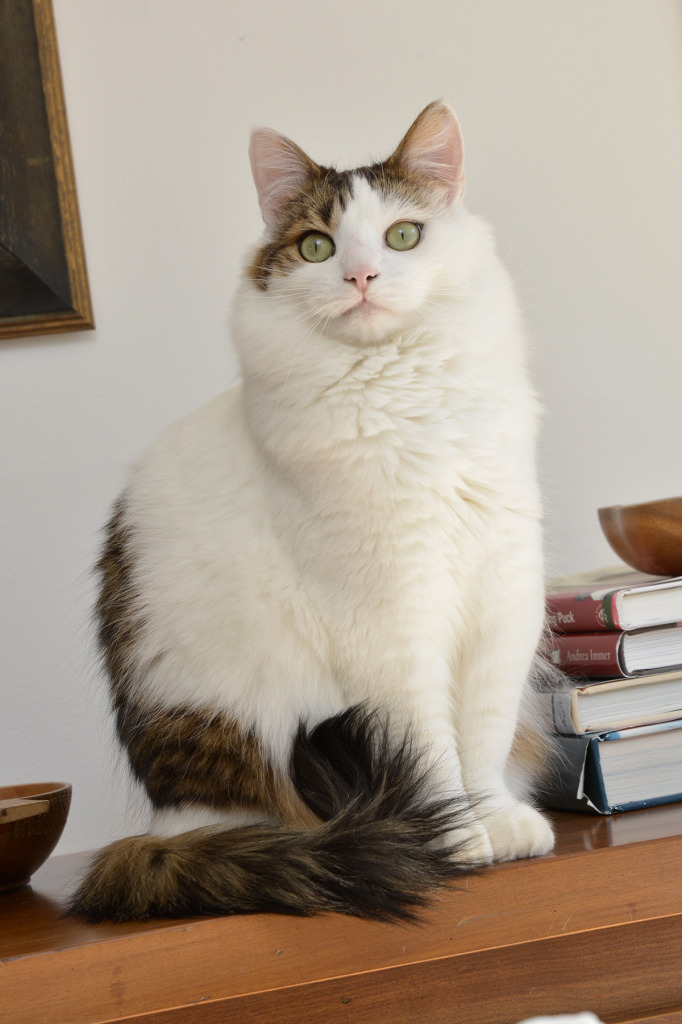 Using an external flash on top of my camera instead of the pop-up one built into my camera gives me much more natural-looking photos. So I use it a lot; but because I feel I have not really mastered flash lighting, I keep everything in a program mode. My camera is set to “P” and my flash is in its program mode. The real trick, however, is the bouncing of the light off of the ceiling. With many external flashes, the head of the flash swivels so that you can make the light from the flash bounce off of a wall or ceiling. Below are two examples of direct flash, like your built-in pop-up flash, versus bounce flash. The images with bounce flash feel more natural – the shadow in the background disappears and the overall result is not harsh. An external flash does make your camera heavier, but the results are so flattering that to me it is worth the extra weight. Be sure when you bounce a flash, the wall of ceiling is white or very light. If you bounce off of a green wall, for example, the photo will have a green cast.
Using an external flash on top of my camera instead of the pop-up one built into my camera gives me much more natural-looking photos. So I use it a lot; but because I feel I have not really mastered flash lighting, I keep everything in a program mode. My camera is set to “P” and my flash is in its program mode. The real trick, however, is the bouncing of the light off of the ceiling. With many external flashes, the head of the flash swivels so that you can make the light from the flash bounce off of a wall or ceiling. Below are two examples of direct flash, like your built-in pop-up flash, versus bounce flash. The images with bounce flash feel more natural – the shadow in the background disappears and the overall result is not harsh. An external flash does make your camera heavier, but the results are so flattering that to me it is worth the extra weight. Be sure when you bounce a flash, the wall of ceiling is white or very light. If you bounce off of a green wall, for example, the photo will have a green cast.
Category Archives: Pet Portraits
Photographing Pets
The key to taking good photos of your pets is to approach them in much the same way you do people in regards to lighting and composition. Much like children, however, it may be hard to get them to actually pose for you. I took a few shots of Spanky and Darla while they were having a quieter day. The lighting in each of the shots is slightly different, but each photo is done without flash and using only window light. Try to not use flash when taking photos of pets to avoid washing out their fur. In the main photo, Spanky was positioned very close to the window and looking out of it. You can actually see the window reflected in his eyes. I was close to him, and at 70mm, the F/2.8 aperture really helped to drop out the background and keep the main focus on his eye closest to the camera.
In picture B, Spanky moved to another table in my work area to lounge. Here, that same window is behind him, creating a nice bright background, and he is lit by the light from that same window that is bouncing off the white wall he is now facing. When taking portraits of people or pets, reflected or bounced light provides a beautiful even lighting that can be very flattering. See a post about reflected light off of a house in the backyard here. You can see the door reflected in his eyes, where a skylight in the hallway has provided extra light and makes a great catch light in his eyes. As with people and birds, it is important to get a catch light in your cat or dog’s eyes to really bring their portrait to life.
- {Photo B}
- {Photo C}
- {Photo D}
In photo C, Spanky was bored of posing, and moved to a location further away from the window and while the light here was not as bright as close to the window, it was spread out over the room for some nice even lighting (see how even the background is lit up). So here, I boosted my ISO a little higher to be able to capture more light. The very shallow depth of field throws his paws out of focus, but helps to show off his comfy sleeping position.
Lastly, in photo D, Darla is photographed in a diffused side-lit manner. The window partially covered by drapes is still allowing a lot of light to come into the room, and the slight side lighting gives the shot a little more definition and drama as opposed to the flattering and softer front or reflected lighting in Spanky’s portraits. Darla was much more curious about the camera and moved in closer to me for a look. The wide open aperture gave me sharp focus on her eyes and everything else drops out of focus.
Those Eyes! Photographing Pets.
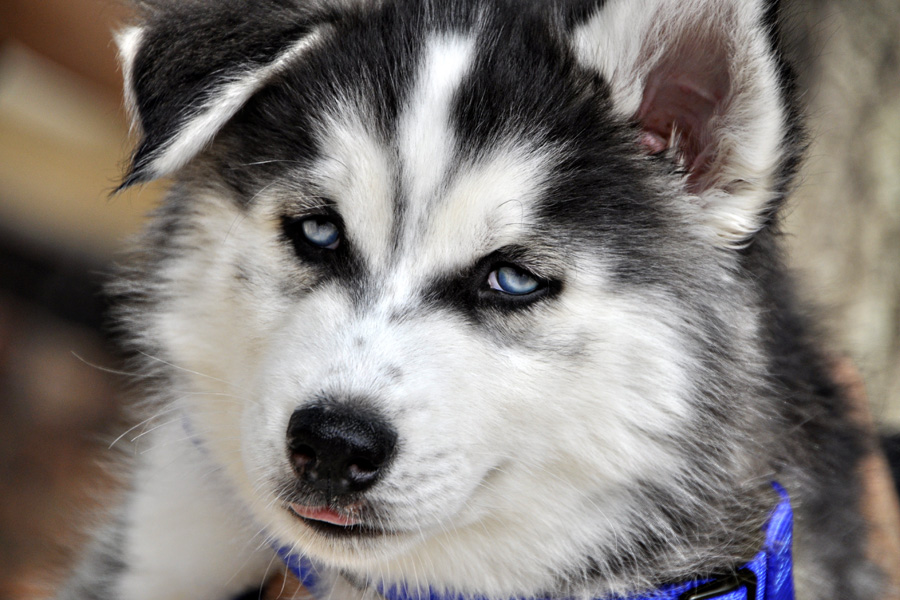
You know that sparkle we strive to get in every subject’s eyes? The sparkle that brings a portrait to life? Well, that same feature needs to be in your pet photos, too. I remember a photo contest judging once where the guest judge, a wildlife photographer, eliminated a contestant’s bird entry since the bird looked dead! It had no pin-point highlight in its eyes and she felt it looked like a taxidermy prop. So when shooting your pets, avoid that same horrible criticism. Walk around them to find the right light, or if you have a well-trained pet, make it sit near a window just like I ask my model to do when I want a casual portrait.
Now with Cinder here (a new addition to the home of close friends), how can you miss? Those eyes! But I still looked to see how the light hit his baby blues. The sun was behind me and we were under the shade of a tree. This is called open shade and gives the image a nice even tone, not contrasty on the bright sunny day. And it also leads to great highlights in the eyes.
Open shade can be found in many places: just inside a doorway, just inside the garage overhang, under the light of the first tree in a forest or tree-lined road, under a beach umbrella, just inside a beach cabana, and many more places just like that. Just be sure to not move your subject too far inside, but keep them just inside where the light is no longer harsh. Use a wide open aperture to blur distracting backgrounds. (ISO 400; 200mm; 1/1250 sec; F/6.3)

